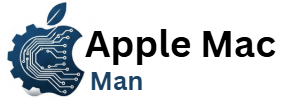Why Wireless Charging Is Slower
Wireless charging has grown in popularity thanks to its convenience, but it’s important to recognize its limitations. The main reason why wireless charging is slower lies in the science of how it works. Unlike cable charging, which transfers energy through a direct electrical connection, wireless charging uses electromagnetic fields to move power from the charging pad to your device. This indirect process naturally creates energy loss in the form of heat, making the overall transfer less efficient.
This inefficiency means that while your phone is charging wirelessly, it is actually working harder to receive the same amount of energy compared to being plugged in. For users who rely heavily on their smartphones for work, gaming, or streaming, waiting extra time for a full charge can be frustrating. While wireless charging is ideal for overnight or casual top-ups, it falls short in scenarios where speed is crucial.
Understanding these technological differences helps you make better choices. If you are asking yourself why your device charges noticeably slower on a wireless dock compared to a USB-C cable, the answer comes down to energy efficiency and transfer speed. Recognizing this limitation allows you to plan your charging habits more effectively and choose solutions that balance convenience with performance.

Wireless vs Cable Charging Speed: The Efficiency Factor
When comparing wireless vs cable charging speed, the difference is often striking. A high-quality cable charger can deliver more wattage directly to your device with minimal energy loss. For example, a modern USB-C power adapter can provide fast charging that replenishes 50% of your battery in just 30 minutes, depending on your device. Wireless chargers, on the other hand, typically offer slower wattage output, which is further reduced by heat dissipation and alignment issues between the phone and charging pad.
The difference in efficiency also impacts battery health. Cables provide steady, controlled energy transfer, whereas wireless charging can sometimes create more heat, which may contribute to long-term battery wear if used as the sole charging method. That’s why many experts recommend a mix of both—use cable charging when you need rapid results and wireless charging for convenience when speed isn’t the priority.
For users who want to optimize their device’s performance, cable charging remains the go-to option for reliability and speed. However, wireless charging still holds its place in the modern lifestyle. The key is to understand that while the technology behind wireless charging is innovative, it is not yet as fast or as efficient as plugging in a cable. By acknowledging this, you can set realistic expectations for your charging habits.

Apple Mac Man Charging Solutions: Smart Choices for Faster Power
At Apple Mac Man, the focus is always on delivering the best solutions for Apple users who demand both speed and convenience. With years of expertise in reviewing and recommending Apple accessories, Apple Mac Man emphasizes that choosing the right charging tools is essential for efficiency. If your priority is faster charging, pairing a high-quality USB-C cable with a compatible fast-charging adapter is the smartest move. This combination ensures that you take full advantage of the rapid charging capabilities designed into modern iPhones and MacBooks.
Apple Mac Man charging solutions also include curated recommendations for reliable wireless chargers that strike the balance between speed and convenience. Not all wireless chargers are created equal, and using a trusted option can improve efficiency while minimizing overheating issues. By relying on Apple Mac Man’s tested product recommendations, users avoid the trial-and-error of buying low-quality chargers that fail to deliver results.
For those who value long-term device health, Apple Mac Man highlights the importance of alternating between cable and wireless charging based on your needs. This strategy ensures faster top-ups when you’re in a hurry and effortless charging when convenience matters most. With these insights, Apple Mac Man helps you power your devices smarter, not harder.
Balancing Convenience and Speed in Everyday Charging
The real question isn’t simply why wireless charging is slower but rather how you can balance convenience with performance. Wireless charging shines in settings where plugging in a cable feels inconvenient—such as on your desk at work, your nightstand, or even in your car. Its value comes from accessibility and ease of use. On the other hand, cable charging remains unmatched when it comes to sheer speed and efficiency, especially for those who cannot afford long charging times.
By mixing the two, users can create an ideal charging routine. For example, you might use a wireless charger throughout the day to keep your device topped up and then switch to a fast USB-C cable in the evening for a quick, full charge. This combination gives you the best of both worlds: the comfort of wireless and the speed of wired charging.
Apple Mac Man encourages users not to view the debate as wireless vs cable charging speed in absolute terms. Instead, it’s about making intentional choices based on your lifestyle and device usage. By understanding the strengths and weaknesses of each method, you can maximize efficiency, preserve battery life, and always stay connected when it matters most.











There was a small mistake in the order. In return, I got the correct order and I could keep the wrong one for myself. I ordered on Friday evening and on Monday at 12:30 the package was with me